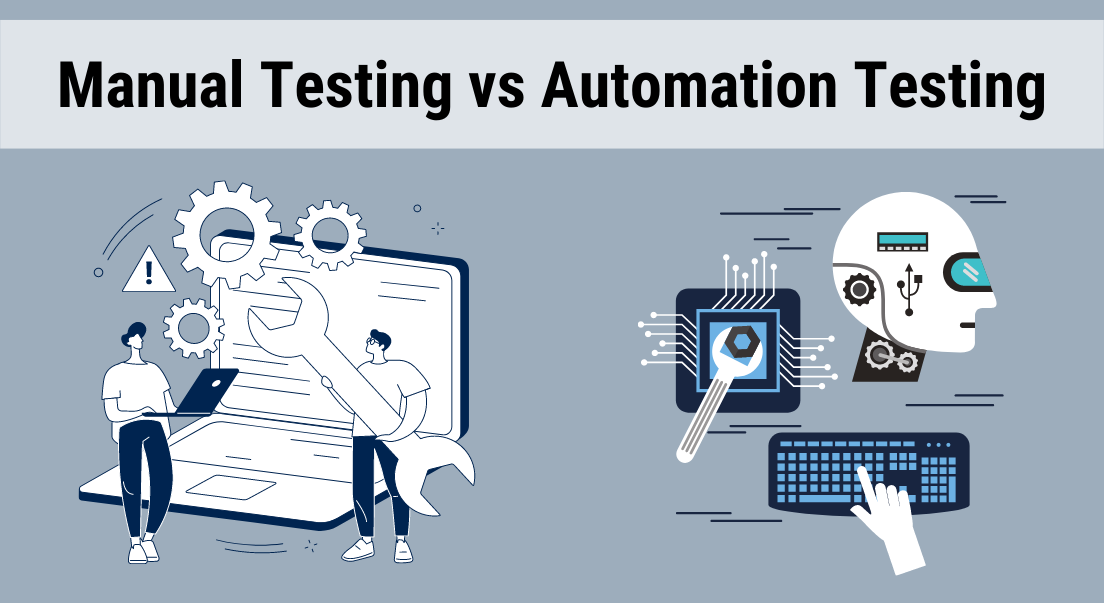From Guidebook to Automated Testing: A Comprehensive Guide to Transitioning Smoothly and Successfully
In the realm of software application testing, the shift from manual to automated procedures has become a significantly important transition for companies seeking to enhance efficiency and accuracy in their testing techniques. The trip from manual to automated testing is not without its obstacles, yet when approached purposefully and with a clear strategy in mind, the advantages can be considerable.
Advantages of Automated Examining
Automated testing offers various benefits, improving performance and accuracy in software application advancement processes. Automated tests can be run at the same time on multiple tools and running systems, drastically speeding up the testing stage compared to manual testing.
Additionally, automated screening makes sure a greater level of precision in identifying defects. Uniformity in testing is likewise improved, as automated tests implement the exact same steps exactly each time they are run.
Picking the Right Devices

To start with, evaluate your purposes and needs. Understand the scope of your job, the innovations entailed, and the skill collection of your team. This evaluation will help you identify the abilities and features you require in your screening devices.
Secondly, take into consideration the compatibility of the devices with your existing procedures and systems. Smooth combination with your present software application growth lifecycle is vital to make certain a smooth shift to automation.
Additionally, assess the scalability and versatility of the tools. As your screening needs advance, the tools need to be able to adapt and suit changes effectively.
Last but not least, consider the support and community around the devices. Robust support and an active individual neighborhood can supply important resources and help when implementing automated testing. By meticulously thinking about these aspects, you can choose the right tools that line up with your requirements and established the stage for an effective shift to automated testing.
Writing Effective Examination Scripts

When crafting examination manuscripts, it is vital to consider the specific needs of the software being examined and guarantee that his comment is here the manuscripts attend to all vital functionalities. Detailed and clear calling conventions for test manuscripts and test situations can enhance readability and maintainability. Additionally, integrating mistake handling devices within the test scripts can assist in identifying and attending to issues without delay.
Moreover, organizing examination scripts into modular elements can improve reusability and scalability, minimizing redundancy and boosting performance in examination manuscript maintenance. Regular evaluations and updates to evaluate manuscripts are vital to equal advancing software requirements and functionalities. By following these concepts, testers can create reliable and durable examination scripts that contribute significantly to the success of automated screening procedures.
Integrating Automation Into Workflows
By perfectly integrating automated testing tools like Selenium or Appium into the software program growth lifecycle, teams can achieve faster comments on code changes, leading to quicker pest detection and resolution. This integration allows for constant screening throughout the advancement process, making sure that any concerns are recognized early on, resulting in higher software quality. Proper assimilation of automation devices calls for cooperation between development, testing, and operations teams to establish a unified workflow that optimizes efficiency and efficiency in supplying high-quality software program products.
Ensuring a Smooth Change
Effectively transitioning to automated screening includes meticulous preparation and mindful execution to take full advantage of and decrease interruptions performance in why not try here the software program advancement process - automation testing. To make sure a smooth change, it is vital to start by performing a thorough evaluation of the present screening procedures and recognizing locations where automation can bring one of the most significant advantages. Engaging with all stakeholders early at the same time, consisting of developers, testers, and project supervisors, is important for garnering support and buy-in for the automation campaign
Interaction is vital during this shift phase. Clear communication of the objectives, advantages, and assumptions of automated testing helps to take care of any type of resistance or problems that may occur. Additionally, offering ample training and sources for team participants to upskill in automation devices and strategies is important for ensuring an effective shift.

Conclusion
To conclude, transitioning from manual to automated screening provides countless benefits, consisting of increased effectiveness and dependability. By picking the proper tools, composing effective examination scripts, and integrating automation effortlessly into operations, companies can make sure a smooth and successful change. It is vital to embrace automation as an important property in software screening procedures to boost total quality and efficiency.
In the realm of software program screening, the shift from handbook to automated processes has ended up being an increasingly essential shift for companies looking for to improve effectiveness and accuracy in their screening practices. Automated tests can be run at the same time on several devices and running systems, considerably speeding up the screening stage compared to hand-operated screening. Uniformity in testing is additionally improved, as automated examinations carry out the same steps specifically each time they are run.To ensure the effective execution of chosen testing devices, the development of reliable examination manuscripts plays a crucial duty in verifying the performance and efficiency of automated procedures - automation testing. By following these concepts, testers can develop durable and efficient test manuscripts that add substantially to the success of automated screening processes